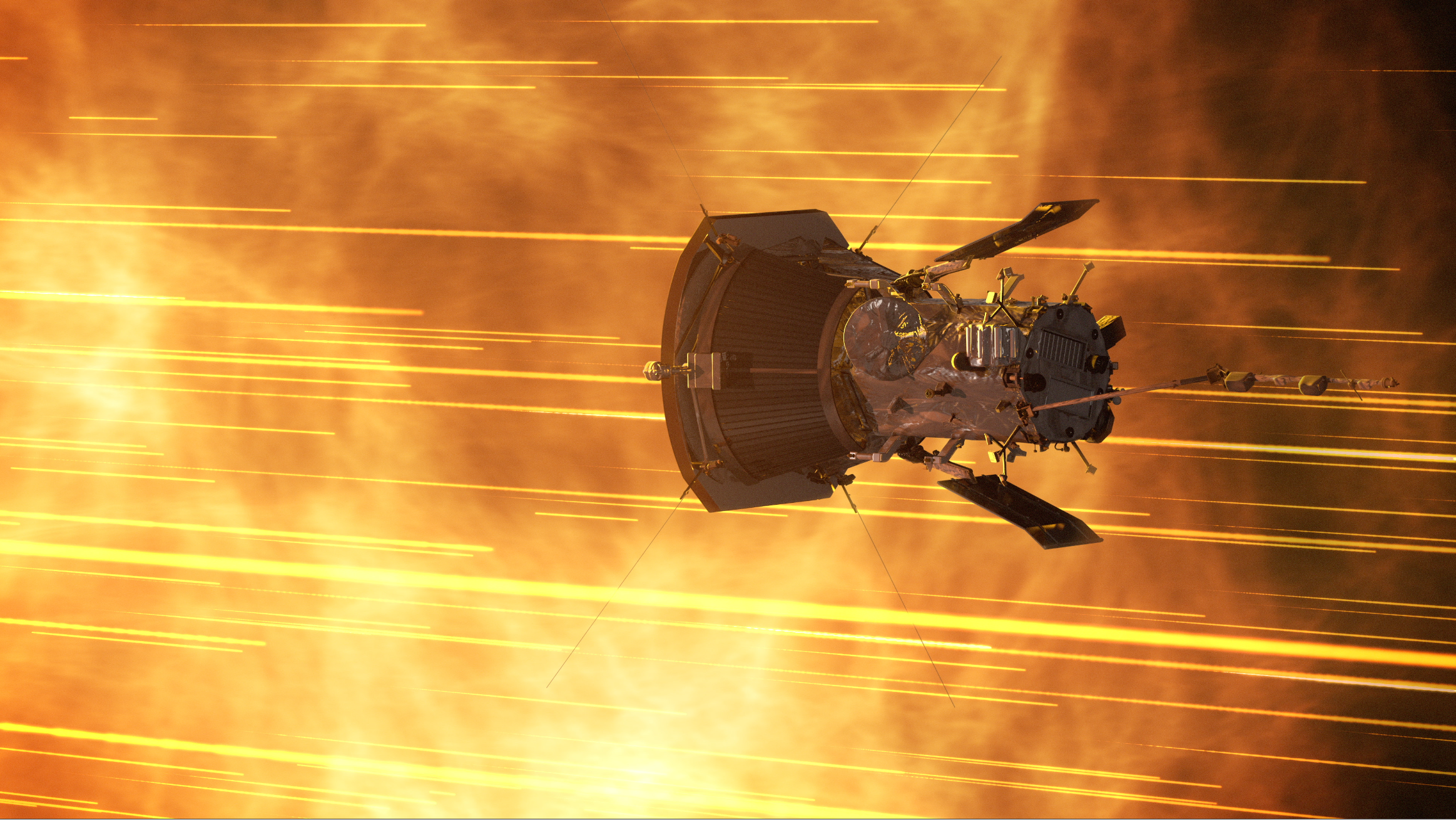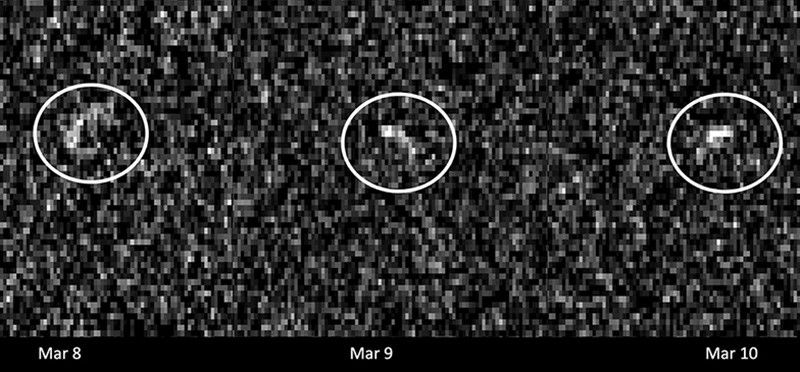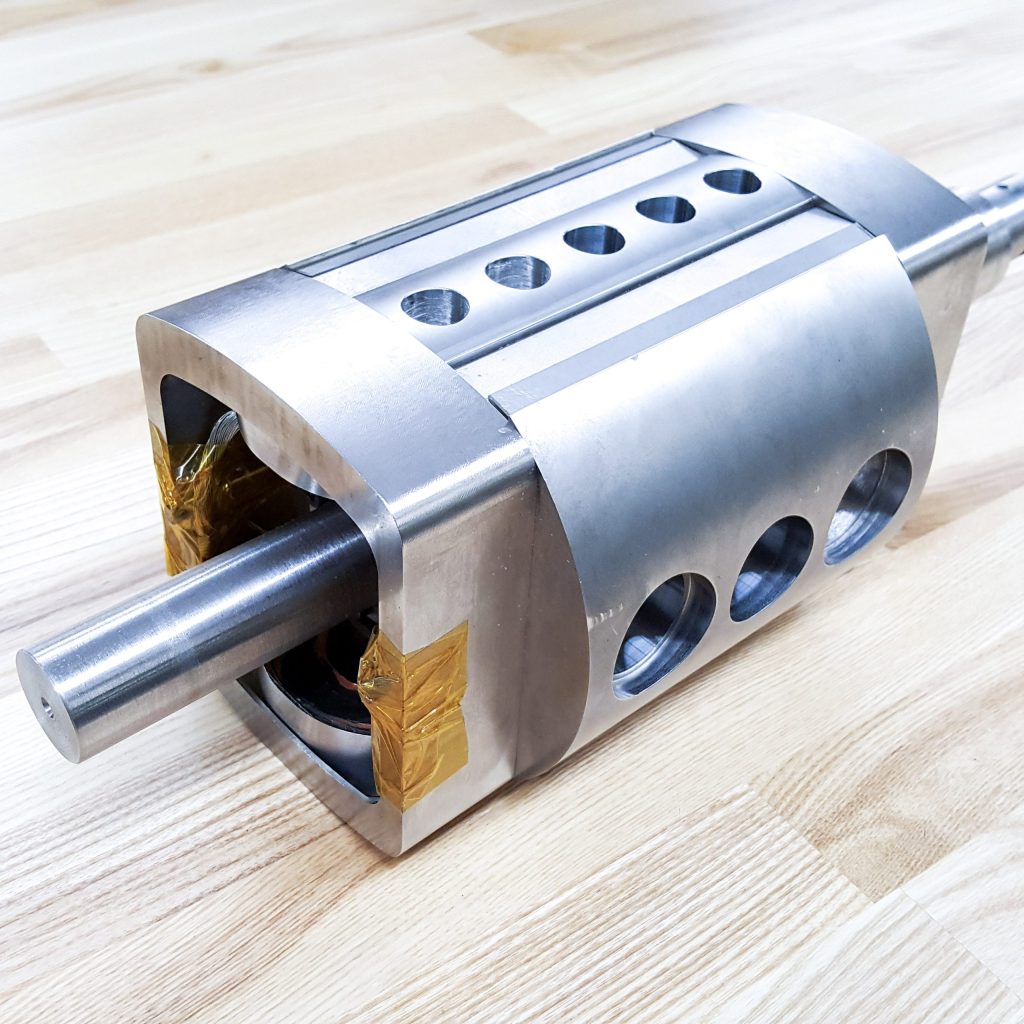In June 1971, with the Apollo 15 mission only one month away, the prime crew consisting of Commander David R. Scott, Command Module Pilot Alfred M. Worden, and Lunar Module Pilot James B. Irwin and their backups Richard F. Gordon, Vance D. Brand, and Harrison H. “Jack” Schmitt neared the end of training for their flight. The 12-day Moon landing mission, scheduled for launch on July 26, included exploration of the Hadley-Apennine region, with the first use of the Lunar Roving Vehicle (LRV), during three surface excursions. To prepare, the astronauts rehearsed aspects of their lunar exploration during their final geology field trip, as well as trained for landing on the lunar surface. They also practiced in the deployment and use of the surface and orbital science instruments.
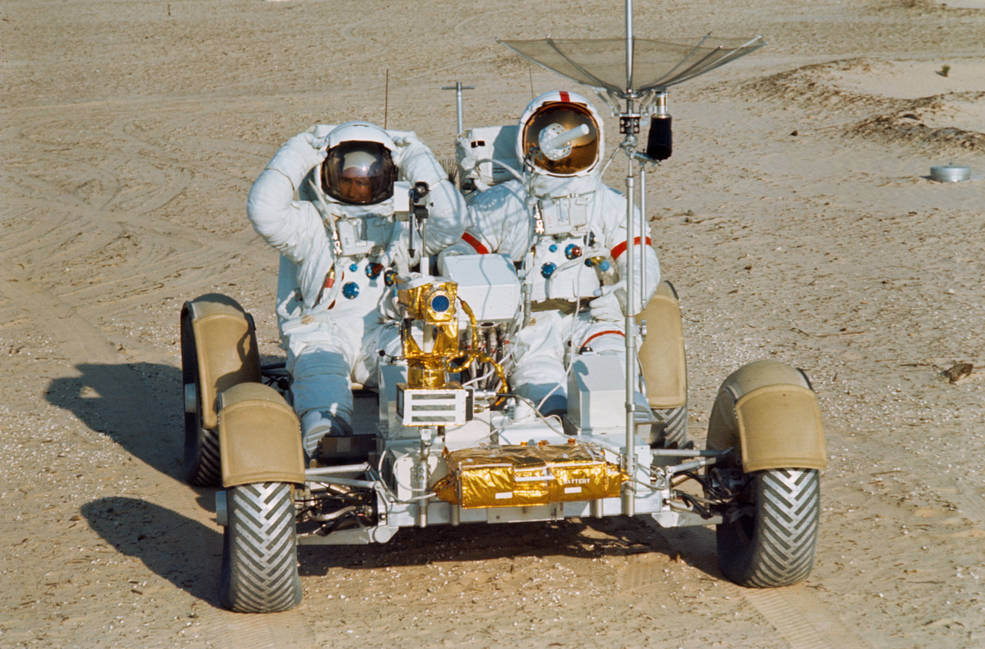
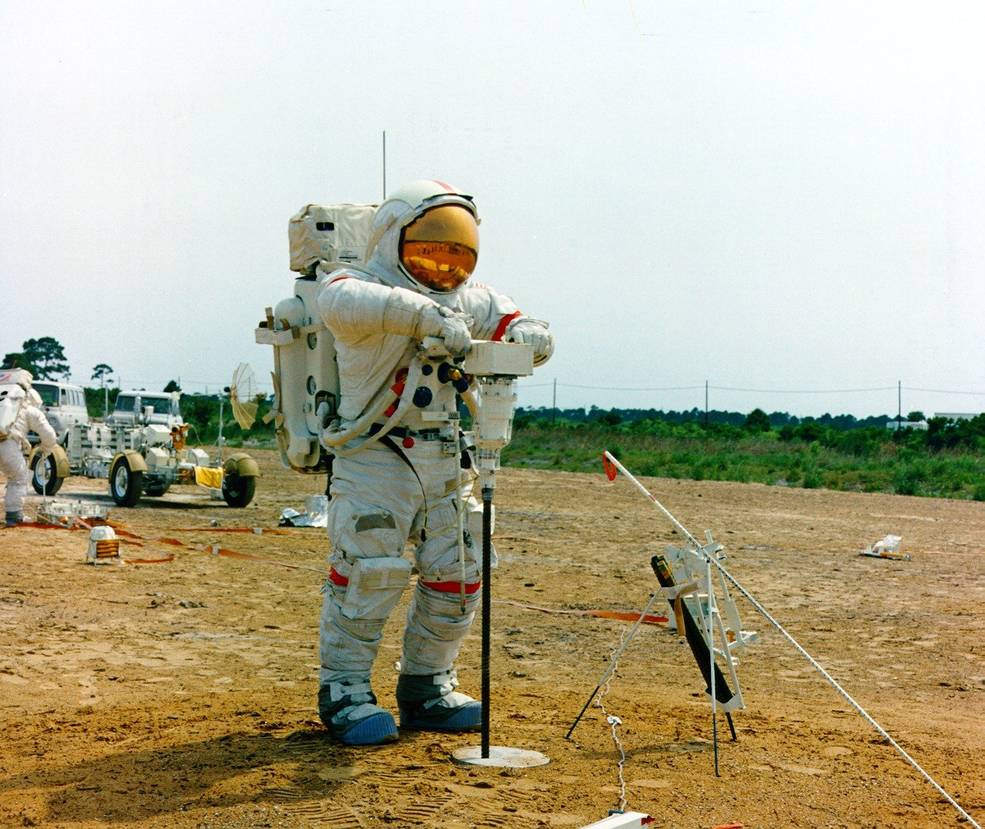
Left: Apollo 15 astronauts James B. Irwin, left, and David R. Scott practice driving the Lunar Roving Vehicle at NASA’s Kennedy Space Center. Right: Scott practicing with the lunar drill.
At NASA’s Kennedy Space Center (KSC) in Florida, the team of astronauts trained for their lunar surface excursions by wearing full pressure suits, deploying similar scientific experiments to those that would be performed on the lunar surface, and driving the LRV. Elsewhere at KSC, ground crews continued to prepare the launch vehicle for the mission. Engineers completed the Flight Readiness Test on June 22, ensuring that all vehicle and ground support equipment would be ready to conduct the countdown demonstration test in mid-July, the last major milestone ahead of the launch.
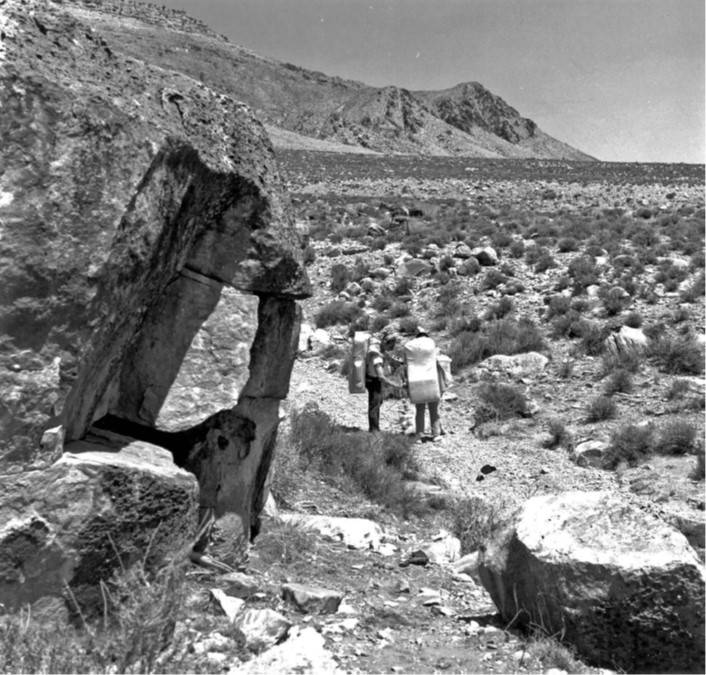
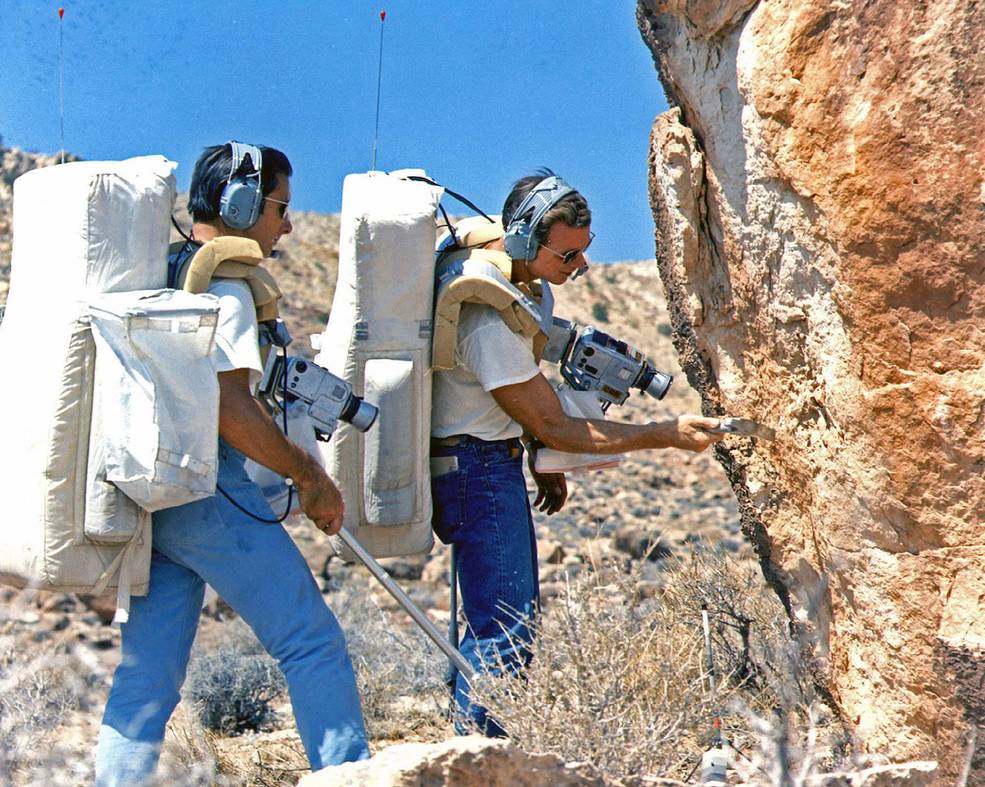
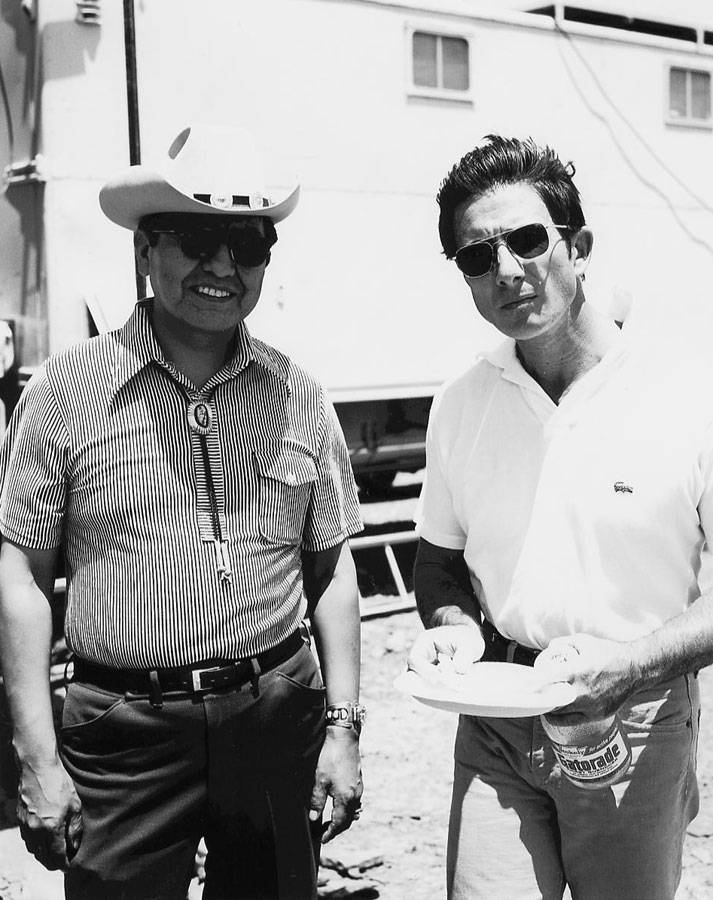
Left: David R. Scott, left, and James B. Irwin at Coconino Point on Navajo tribal land near Flagstaff, Arizona, during the final Apollo 15 geology field trip. Middle: Close-up of Irwin, left, and Scott examining and sampling an outcrop at Coconino Point. Right: Irwin, right, posing with Navajo tribal chairman and World War II Marine code talker Peter MacDonald.
Apollo 15 astronauts Scott and Irwin and their backups Gordon and Schmitt, supported by a team of geologists, completed their final geology field trip on June 25. The exercise was held at Coconino Point on Navajo tribal land near Flagstaff, Arizona – an area that included geologic features comparable to those at the Hadley-Apennine landing site on the Moon, with the Little Colorado River Gorge used as an analog to Hadley Rille. The activities simulated the second and third surface excursions and included use of the Grover, or Geology Rover – a training version of the LRV built by the U.S. Geological Survey. The astronauts used tools and cameras identical to the ones they used on the Moon’s surface. To add realism to the exercise, geologists staffed the science support room at the Mission Control Center at the Manned Spacecraft Center, now NASA’s Johnson Space Center in Houston, as they would during the actual mission. For the full effect, Astronaut Joseph P. Allen served as the capcom, or capsule communicator, during the exercise as he did during the mission.
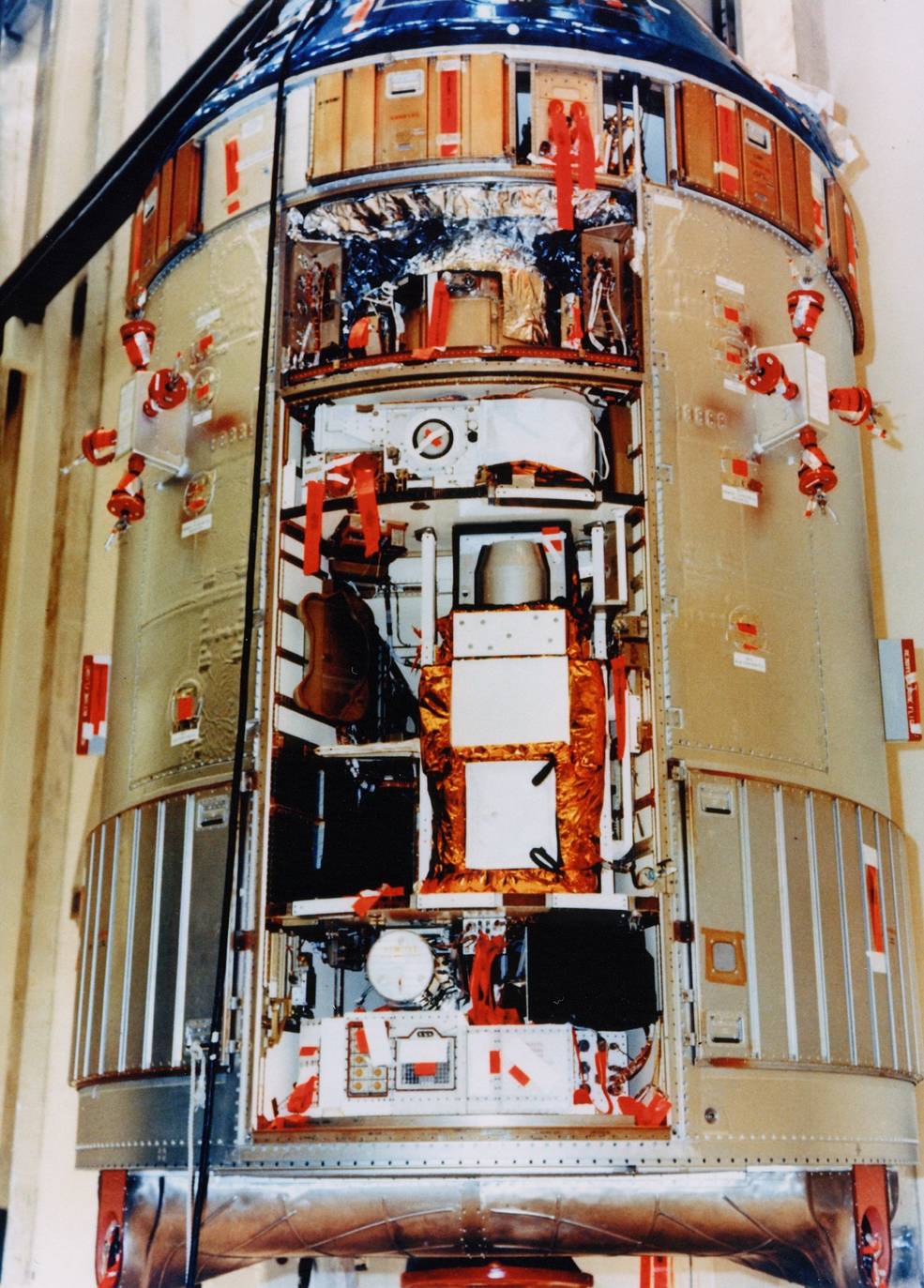
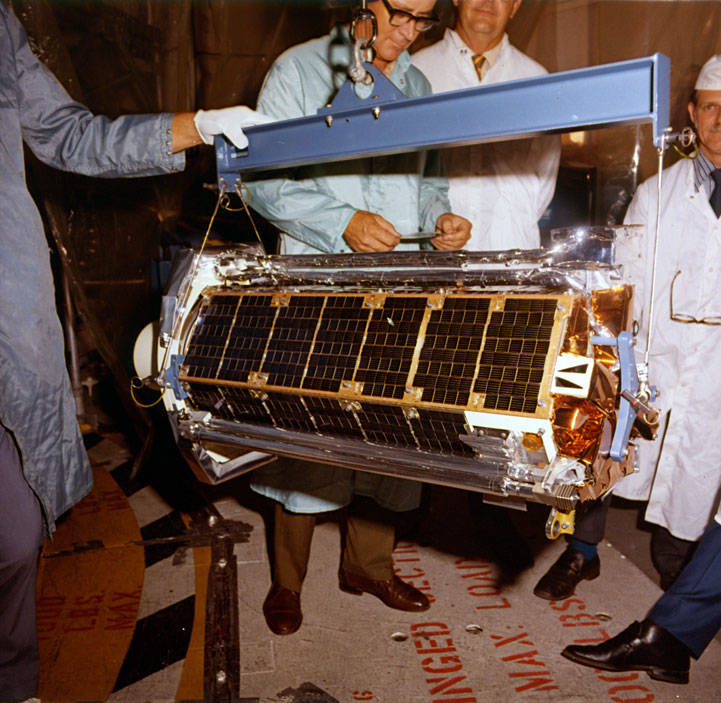
Left: A view of the Scientific Instrument Module (SIM) bay mounted in the Service Module, flown for the first time on Apollo 15. Right: Ground crews preparing to install the Particle and Fields Subsatellite into the SIM bay.
In addition to the LRV, another feature new to Apollo 15 was the Scientific Instrument Module (SIM) to enable expanded science observations from lunar orbit. Mounted in a sector of the Apollo Service Module, the SIM carried specialized cameras and instrumentation for gathering a variety of scientific data about the Moon and its environment. The new instruments included a laser altimeter for accurate measurement of height above the lunar surface; a large-format panoramic camera for mapping, correlated with a metric camera and the laser altimeter for surface mapping; a gamma ray spectrometer on a 25-feet extendible boom; a mass spectrometer on a 21-feet extendible boom; X-ray and alpha particle spectrometers; and a subsatellite deployed into lunar orbit carrying a particle analyzer and a magnetometer. The exposed film canisters from the cameras were retrieved during a spacewalk on the return journey to Earth, and Worden and his backup Brand rehearsed the activity in a neutral buoyancy water tank at MSC.
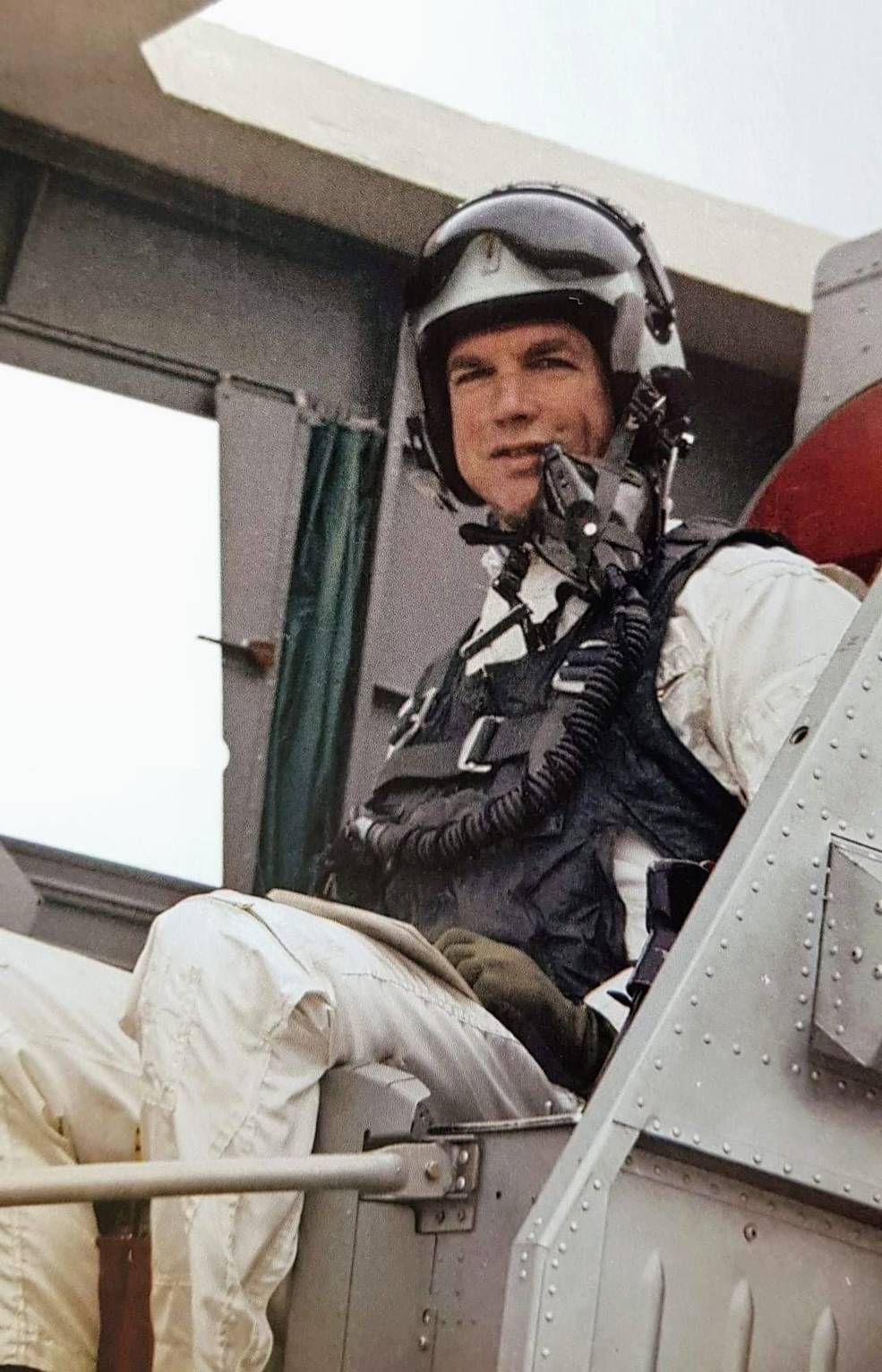
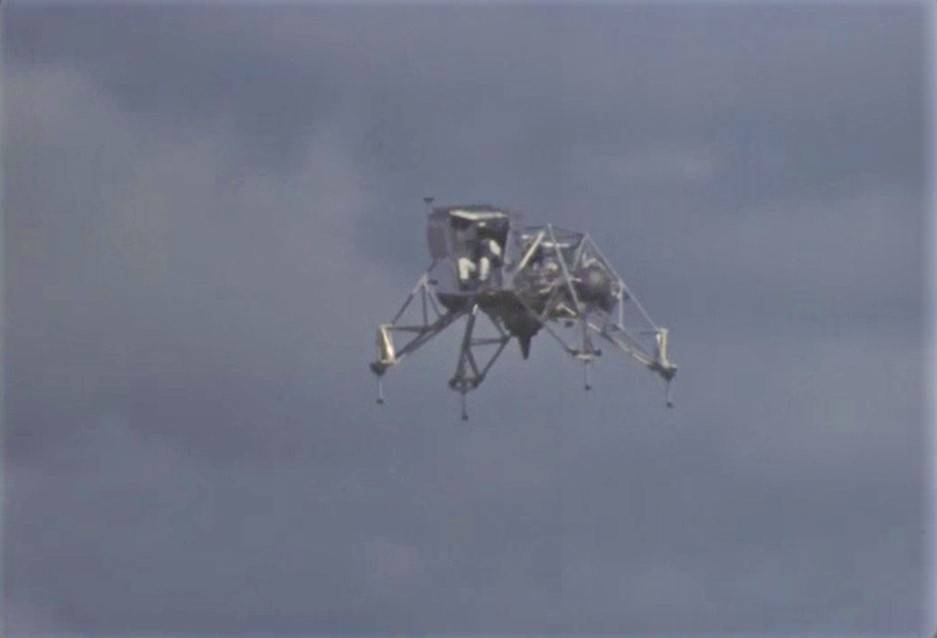
Left: Apollo 15 astronaut David R. Scott in the cockpit of the Lunar Landing Training Vehicle (LLTV) prior to take off from Ellington Air Force Base in Houston. Right: Scott flying the LLTV at Ellington.
Apollo astronauts used the Lunar Landing Training Vehicle (LLTV) at Ellington Air Force Base near MSC to train for the descent to the lunar surface. The LLTV, often dubbed “the flying bedstead,” was a high-fidelity simulator of the Lunar Module’s (LM) flying characteristics, especially of the final 500 feet of the descent. Challenging to fly, Apollo commanders considered the LLTV an essential tool to teach them the skills to pilot the LM to the lunar surface. In total, Scott completed 18 LLTV flights and his backup Gordon flew it 14 times. In addition, while serving as the backup Apollo 12 commander in 1969, Scott completed an additional 11 LLTV flights. Gordon made his final LLTV flight on June 26, Scott on July 2. Both were then qualified to pilot the LM to the lunar surface.
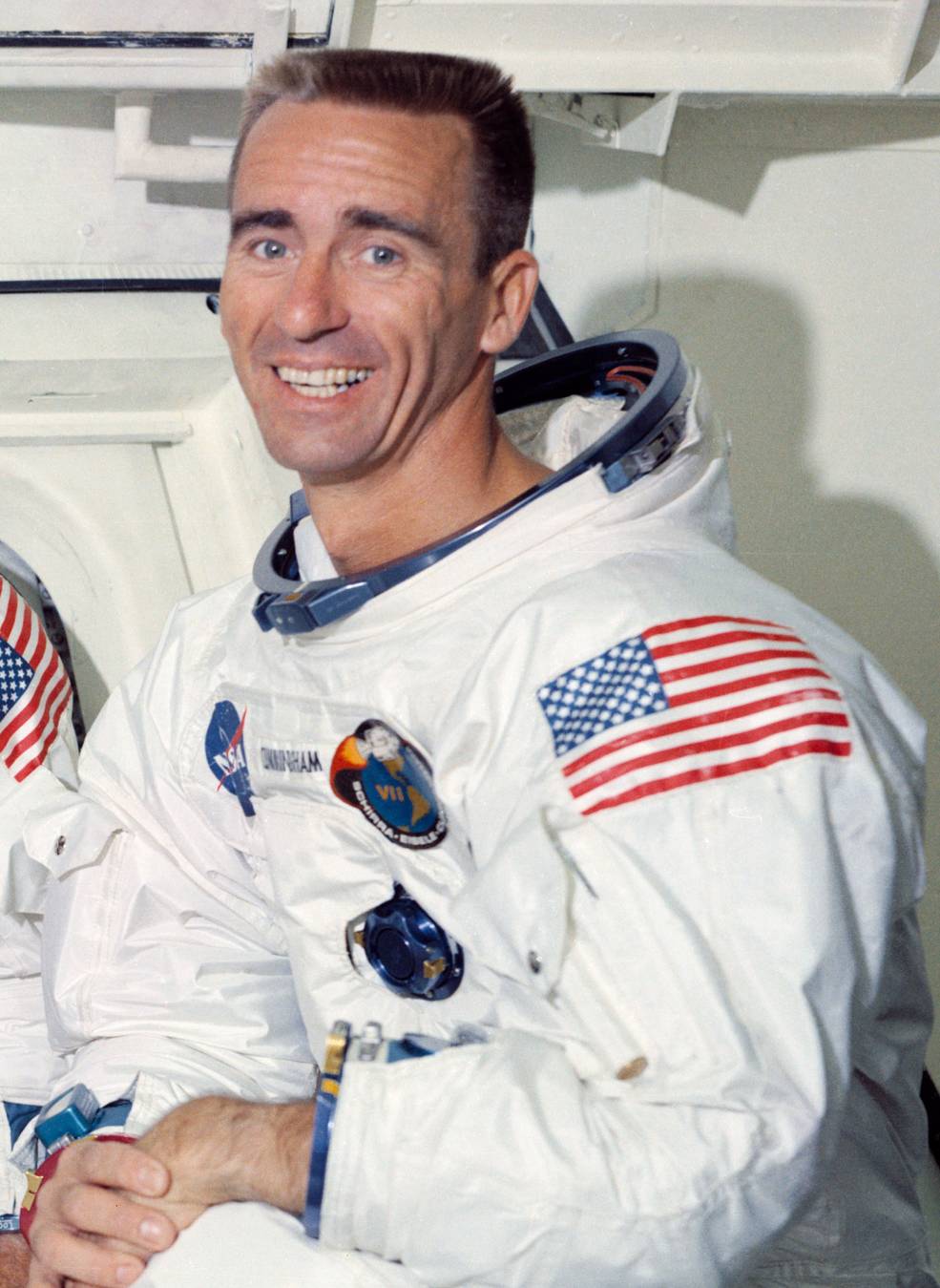
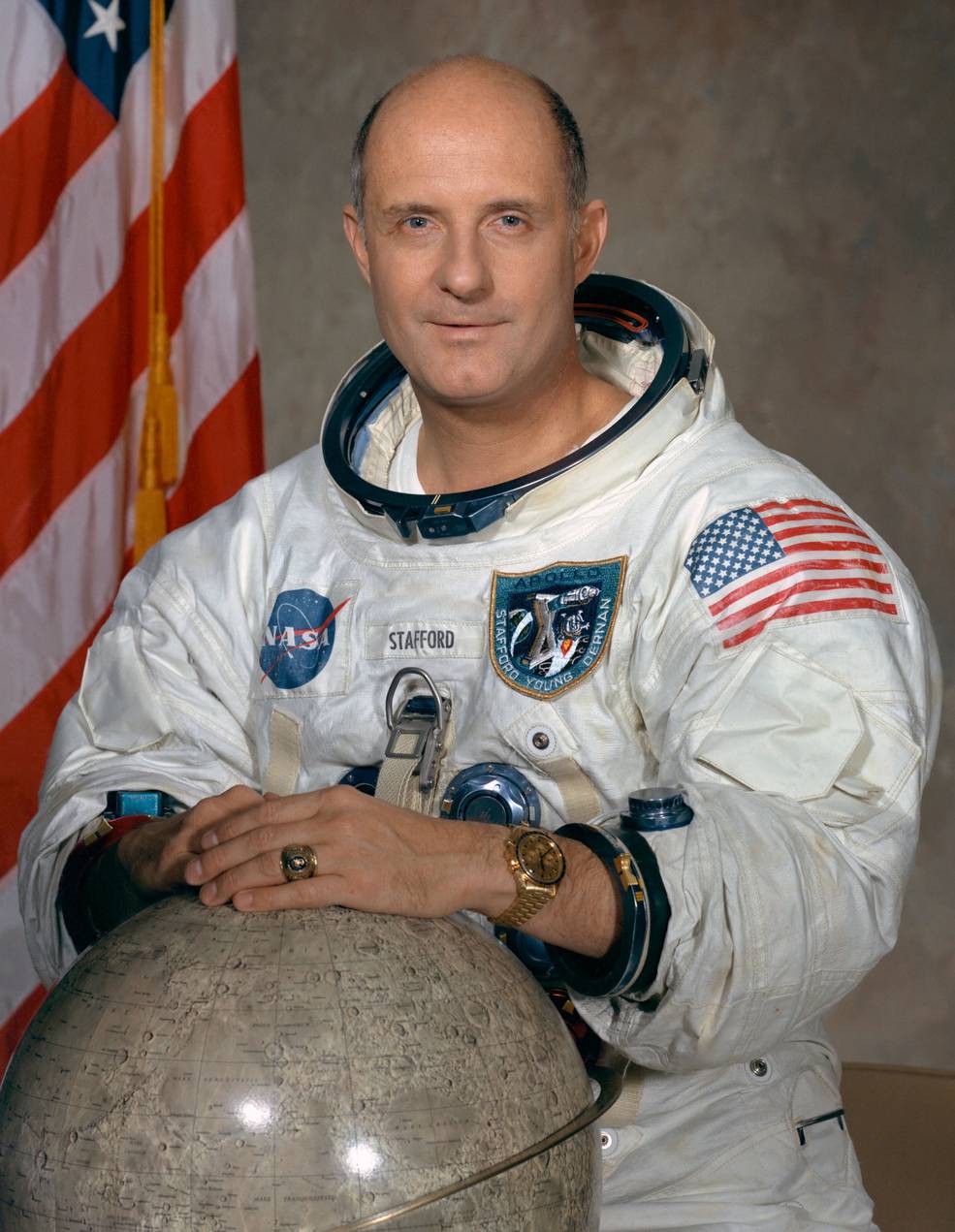
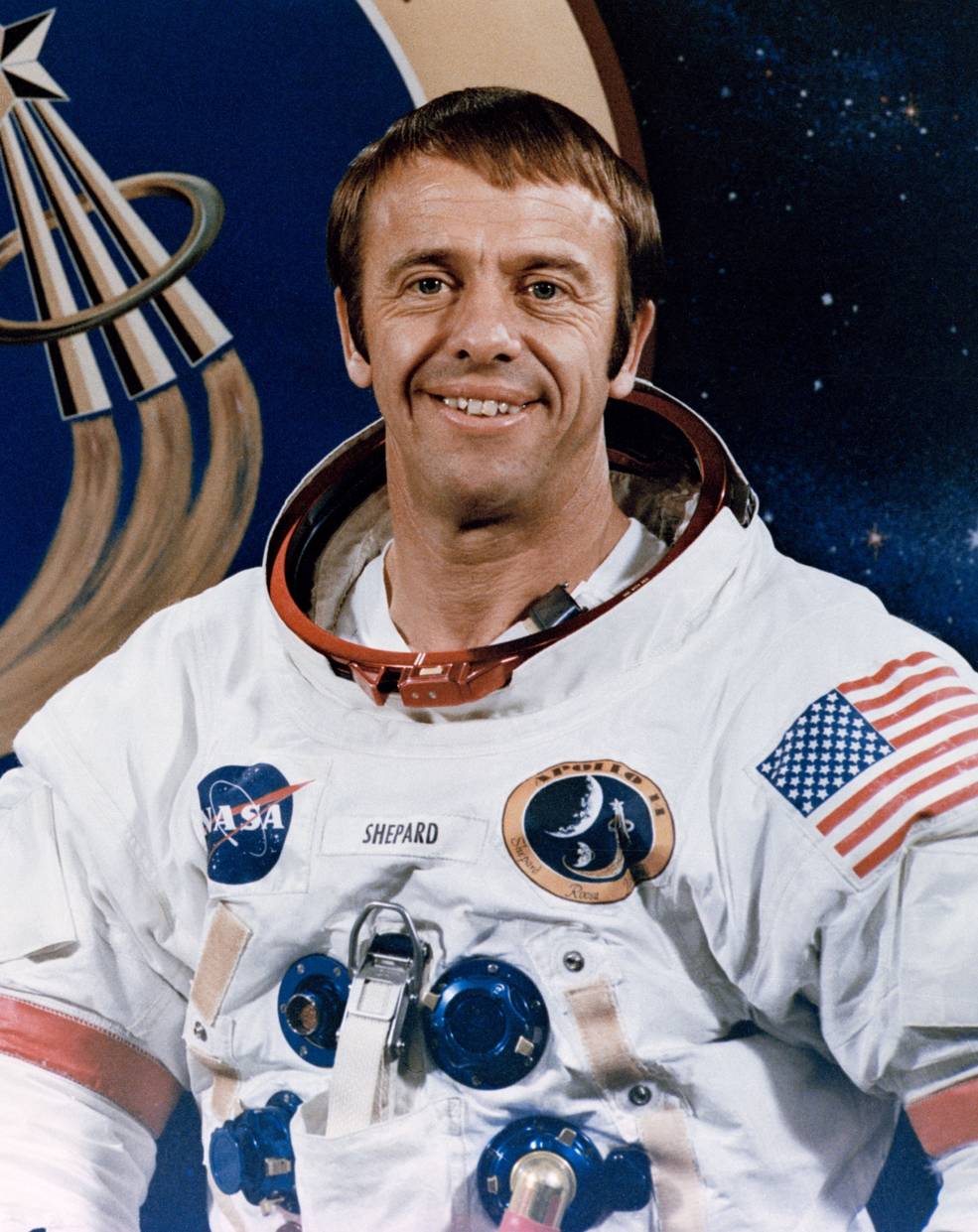
Left: Apollo 7 astronaut R. Walter Cunningham. Middle: Gemini VI and IX and Apollo 10 astronaut Thomas P. Stafford. Right: Mercury-Redstone 3 and Apollo 14 astronaut Alan B. Shepard.
Several changes took place in the Flight Crew Operations Directorate (FCOD) at MSC. On June 17, 1971, Apollo 7 astronaut R. Walter Cunningham announced his retirement from NASA effective Aug. 1, to take the position of Vice President of Operations for Century Development Corporation, the developers of Greenway Plaza in Houston. Thomas P. Stafford, veteran of the Gemini VI and IX and Apollo 10 missions, was named FCOD deputy director, reporting to Director Donald K. “Deke” Slayton. Alan B. Shepard , the first American in space and recently the Commander of Apollo 14, resumed his duties as chief of the astronaut office.
To be continued…
World events in June 1971:
June 3 – NBA player Lew Alcindor announces his formal name change to Kareem Abdul-Jabbar.
June 6 – Soyuz 11 launches with cosmonauts Georgi T. Dobrovolski, Vladislav N. Volkov, and Viktor I. Patsayev. The next day they board Salyut, establishing the world’s first space station.
June 10 – American and Soviet officials exchange samples of lunar soil returned by Apollo 11 and 12 and Luna 16 after signing an agreement to expand cooperation in space.
June 13 – The New York Times begins publishing excerpts from the Pentagon Papers, classified documents about the U.S. conflict in Vietnam.
June 14 – The first Hard Rock Café opens in London.
June 18 – Low-cost carrier Southwest Airlines begins service on Dallas-Houston and Dallas-San Antonio routes.
June 28 – In 8-0 decision, the U.S. Supreme Court overturns draft evasion conviction of boxer Muhammad Ali.
June 28 – Elon Musk is born in Johannesburg, South Africa.
June 30 – After a record-breaking 24-day mission aboard the Salyut space station, Soyuz 11 cosmonauts Dobrovolski, Volkov, and Patsayev are killed during their return to Earth by a sudden depressurization of their capsule.
John Uri
NASA Johnson Space Center


